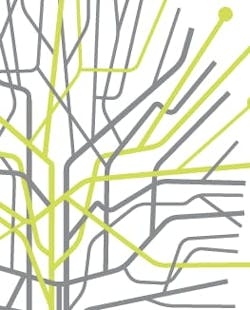Remodeling franchises branching out
Nowhere in remodeling is the entrepreneurial spirit more evident than in the ranks of franchise and dealer networks. These are the firms whose owners typically work on their business rather than in their business.
Today many remodelers, after years of successfully running one type of home improvement or remodeling business, choose to branch out into new niches—some to better leverage existing overhead and staff, and others as a way to provide a hedge against the cyclical nature of their existing business. In an age when leads for jobs is the No. 1 objective for many remodelers, the branding and marketing benefits of operating under a known and respected national organization are also compelling.
Rich Green, a remodeler and entrepreneur in St. Louis, is typical of this business mindset. Earlier this year he was looking for way to offer replacement bathroom services as an adjunct to his 10-year-old full-service remodeling firm, Hunter Renovations and Remodeling. He wound up signing on as a new dealer for a bathroom replacement organization.
“We were doing $30,000-plus bathrooms,” Green says, “but I was running into many prospects who just could not afford it. Therefore, I wanted access to a product to give them that beautiful look without breaking their bank.”
Green overcame a similar predicament three years ago when the kitchen side of his remodeling business fell off in 2008 and 2009 as a result of the recession. Prior to the recession, the firm’s average kitchen job was $60,000. First, he reduced headcount, going from nine crews to two. Second, he bought a local kitchen cabinet re-facing business, 38-year-old Cabinet Clad Kitchens.
For his replacement bath business search, Green’s inclination was to simply source product and to operate it under a new business. But as he began researching and making inquiries, he gravitated toward Bath Planet, a Palatine, Ill.-based dealer network. Green says it was the responsiveness of the corporate team that initially attracted him. “I am a stickler for follow through as an attribute in a business partner and when I wanted to know more about Bath Planet, they were ‘Johnny on the spot,’” he says.
Green, who became Bath Planet’s 100th dealer two months ago, says ultimately the decision came down to a good national brand backed by a Good Housekeeping seal of approval.
Rick Hirschhaut, senior vice president for Bath Planet, said the company has grown faster than expected. Launched in November of 2011, the company expected to add 35 dealers in 2012 and hit 75 by the end of this year. The quick growth, he says, correlates to its two-year pre-launch development process. “We started on the consumer side,” he says. “We asked ourselves, what is good about home improvement? What is not so good about it? What are some of the pain points? And how do we address those pain points? Based on Better Business Bureau complaints, the industry was viewed with suspicion by homeowners. So we tried to do this in a better way.”
Seeking steadier revenue streams
Robb King, senior vice president of franchise development for the Paul Davis Companies, says their network has also grown dramatically in the past several years. It is a response, he says, in part to the recent downturn in the economy and in part to the steady nature of the Paul Davis service offering—insurance restoration.
Before the downturn, “the strategy of diversification into [discretionary] remodeling and adding it to our mix of business really helped our existing franchises,” King says. “And it is funny. The plan was to add more remodeling work to diversify the insurance restoration; today, it is the insurance restoration that bolstered us up when remodeling turned down.”
In 2009 the company created a new type of franchise operation that focused exclusively on the emergency repair part of insurance restoration—Paul Davis Emergency Services. By means of an explanation, there are two phases to insurance restoration jobs. Emergency service work lasts one-to-four weeks to mitigate damage. The second phase is the long-term work, which is the rebuild. In 2010, the first full year of Paul Davis Emergency Services, the company added 20 franchises and three full-service Paul Davis Restoration franchises. In 2011, the company added 53 new Emergency Services franchisees and seven full-service franchisees. As a result, the company was named the eighth-fastest growing franchise network by Entrepreneur magazine.
“Considering that we are nearly a 50-year-old company with over 300 franchisees,” King says, “that is really saying something.”
The Paul Davis network initially grew in the ‘80s and ‘90s by attracting disenfranchised corporate executives to the ranks of business owners. They brought the necessary financial training and management background to succeed, King says. But in the past three years, the company has grown primarily by adding experienced remodelers and custom builders.
“I have been surprised by the number of builders and remodelers we’ve added, but I guess I shouldn’t be; the building business is great when it is going gangbusters, but it is not so great in a recession,” King says. “They are telling us that they are sick of the downturns and they want a business they can build year after year.”
In addition, King says, some remodelers and builders are attracted by the company’s finely tuned information technology and business systems that can help them better predict costs, margins, and ultimately profit on individual jobs.
King notes, “We allow people to build new homes. Those are royalty exempt. So we have had several builders and remodelers ask us to use those systems to make more margin on their non-Paul Davis jobs.”
In the end, the decision to branch out into dealer and franchise programs is compelling. It offers better marketing, improved focus, and a better brand, as well as mature business systems. Having been through the recent downturn, many remodelers see those benefits amounting to an attractive package. PR
